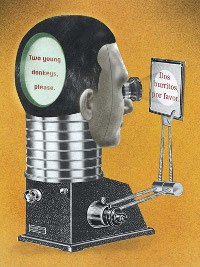Poll: How many CAT tools can you use? Thread poster: ProZ.com Staff
|
|---|
This forum topic is for the discussion of the poll question "How many CAT tools can you use?".
View the poll results »
| | | | neilmac
Spain
Local time: 19:10
Spanish to English
+ ...
I use two, mainly.
However, I can use others, but I just don't need to - I use the 2 things that work for me, and that's enough.
| | | |
I dislike CAT tools and fortunately I’m in a stage of my career when I can afford to pick and choose what work I do. I used Trados when I worked in-house and I deeply disliked it. I particularly hated all the time wasted aligning and re-aligning documents. That being said, when I retired from my in-house position and started freelancing I didn’t buy a CAT tool. To date I have survived without one (that’s not entirely true as I work with XTM for one of my regular customers) and I have manag... See more I dislike CAT tools and fortunately I’m in a stage of my career when I can afford to pick and choose what work I do. I used Trados when I worked in-house and I deeply disliked it. I particularly hated all the time wasted aligning and re-aligning documents. That being said, when I retired from my in-house position and started freelancing I didn’t buy a CAT tool. To date I have survived without one (that’s not entirely true as I work with XTM for one of my regular customers) and I have managed to build a strong client base. My approach to translation is that of a “handicraft” rather than an “industrial process”. I’m more concerned with quality and flow than with consistency, productivity and rapidity. Anyway, most of the texts I translate are different with a very small number of repetitions, with one exception: my longest-standing customer tends to have extremely repetitive texts, but nothing that the Word search function can’t solve easily. Well, if you know of a CAT tool that is really intuitive, one that you just jump right into and start working with it, learning as you go and not one that requires you to take time out from work, maybe I could be converted (???). Otherwise, I’ll stop translating and retire for good the day a CAT tool can translate creatively. ▲ Collapse
| | | | expressisverbis
Portugal
Local time: 18:10
Member (2015)
English to Portuguese
+ ...
| You can keep translating, Teresa | Aug 8, 2021 |
Teresa Borges wrote:
Otherwise, I’ll stop translating and retire for good the day a CAT tool can translate creatively.
A CAT tool is used to increase the productivity of the translator and to improve the quality and consistency of your texts (by using Translation Memories, Termbases, and Quality Assurance, etc.).
It is designed to simplify and assist you in the translation process, but it doesn't replace a human translator, nor does it do the work of the translator.
And I believe it will never be capable of transcreate or translate creatively a text for us.
Creativity is one of the greatest gifts of the human mind. Like I read a few days ago: "creativity is a sealed-off door that machines can never penetrate."
You can keep translating with or without using a CAT tool.
Answering the poll: I use 2 or 3, and I am happy with them. I used to test others, and there is one in particular I would like to explore more.
[Edited at 2021-08-08 12:08 GMT]
| | |
|
|
|
I can use about 10, most of them on a regular basis and only 2 of them my own.
| | | |
I mainly use three with a very big dictionary. I also use online sources for research. I have discovered that I can handle CAT tools suggested by clients. However, no CAT tool can replace the human mind.
[Edited at 2021-08-08 14:09 GMT]
[Edited at 2021-08-08 14:11 GMT]
| | | | Irving Reyes 
Dominican Republic
Local time: 14:10
English to Spanish
+ ...
I use OmegaT and wordfast, but I'm planning on getting a memoQ license eventually, still not sure.
| | | | | All of them, in theory | Aug 8, 2021 |
There are two or three different ways to use a CAT.
One way is to use it to translate documents for direct clients, where I import the document into my CAT and use all the tricks I know within the CAT, like segmenting, tagging, pretranslating, dictation, keyboard shortcuts, managing my own TMs, exporting the result for external spellcheck and grammar check, and so on, add your tricks here. For this purpose I should know the CAT inside out, and there is only one CAT system I c... See more There are two or three different ways to use a CAT.
One way is to use it to translate documents for direct clients, where I import the document into my CAT and use all the tricks I know within the CAT, like segmenting, tagging, pretranslating, dictation, keyboard shortcuts, managing my own TMs, exporting the result for external spellcheck and grammar check, and so on, add your tricks here. For this purpose I should know the CAT inside out, and there is only one CAT system I can use in this way.
Another way is to use a CAT that was more or less required by the agency. In this case, many things mentioned above have to be done by the agency itself, for example importing, segmenting, and tagging. Often translators are much restricted in their use of the CAT here since the license might be provided by the agency, or the CAT is an online CAT that is designed to hamper and limit translators in all kinds of ways or force them to do certain steps like mandatory QA with ignoring thousands of false positives. Depending on those settings, I basically only need to know two or three things about a CAT, like how to confirm a segment, how to copy the source to the target, and how to deliver a project. In this regard, I can use any CAT and have probably used more than a dozen different ones already.
A third way is a mixture of the two. Some agencies provide the project in a particular CAT but allow exporting the project and TM/TB from there, so that I can use my own CAT for the work with all the productivity tools I got, and import it into the agency CAT when I'm done. All agencies should allow that but it seems many agencies don't really trust their translators and limit them unnecessarily. ▲ Collapse
| | |
|
|
|
Once you know how to use Trados you can use them all, to be honest.
| | | | | |
Mostly I use Trados Studio/SDL Groupshare, Smartcat and Memsource.
For some clients I use XTM, MateCat or Wordbee (their platform). I trained on MemoQ but I really don't care much for it, although Memsource is better.
I was a bit squirrely about getting Trados but I actually like it.
| | | | Mario Freitas 
Brazil
Local time: 15:10
Member (2014)
English to Portuguese
+ ...
I CAN use all of them. I think the question should be how many I actually use. I never counted, but I've used several. The client sends me the job, I deliver the job. It doesn't matter what CAT it is.
| | |
|
|
|
| But do they help you or hinder you? | Aug 10, 2021 |
I use one CAT, which I can tune to the way I work. I have just updated it on one of my computers and spent some hours configuring the settings and checking the defaults. You can do that once every couple of years, but not frequently!
The Auto-correct compensates for my clumsy typing, and I use the glossary function creatively to insert strings, correctly spelled and checked, to save typing. Apart from that, I know all the short cuts and do not have to think every time I use a featur... See more I use one CAT, which I can tune to the way I work. I have just updated it on one of my computers and spent some hours configuring the settings and checking the defaults. You can do that once every couple of years, but not frequently!
The Auto-correct compensates for my clumsy typing, and I use the glossary function creatively to insert strings, correctly spelled and checked, to save typing. Apart from that, I know all the short cuts and do not have to think every time I use a feature - I can activate it and concentrate on translating.
Getting familiar with the mechanics is a hurdle that everyone has to get over when learning to use a CAT, and obviously some can do it more easily than others. I don't find shifting from one to another easy, so it is my CAT or no CAT.
My CAT tool helps me, but if I have to use another, and cannot access all my usual tricks and refinements, or if the short cuts are different, then I have to stop and think all the time - how do I go to the next segment, where is the glossary, how do I insert a term?
My work suffers. Not only am I slower, but I simply cannot produce the same quality.
I sympathise entirely with those who do not use CATs at all - I hated Trados for a long time, but my employer at the time insisted, and in the end I was glad.
A tool should be a help with your work, not a necessary evil. If it breaks your concentration and distracts you, then you cannot produce your best work. Craftsmen use and maintain their own tools, and do not accept any implement the customer may produce.
Our tools are software, but the same principle should apply.
[Edited at 2021-08-10 18:36 GMT] ▲ Collapse
| | | | Paul Lambert 
Sweden
Local time: 19:10
Member (2006)
Swedish to English
+ ...
Why are those who know precisely four CAT's not being counted?
| | | |
Paul Lambert wrote:
Why are those who know precisely four CAT's not being counted?
Because it’s impossible. Like drinking four pints. Once you get that far you’re not just going to stop there. Either you stay sober at three, or you go for a proper sesh.
| | | | To report site rules violations or get help, contact a site moderator: You can also contact site staff by submitting a support request » Poll: How many CAT tools can you use? | Trados Studio 2022 Freelance | The leading translation software used by over 270,000 translators.
Designed with your feedback in mind, Trados Studio 2022 delivers an unrivalled, powerful desktop
and cloud solution, empowering you to work in the most efficient and cost-effective way.
More info » |
| | CafeTran Espresso | You've never met a CAT tool this clever!
Translate faster & easier, using a sophisticated CAT tool built by a translator / developer.
Accept jobs from clients who use Trados, MemoQ, Wordfast & major CAT tools.
Download and start using CafeTran Espresso -- for free
Buy now! » |
|
| | | | X Sign in to your ProZ.com account... | | | | | |










































